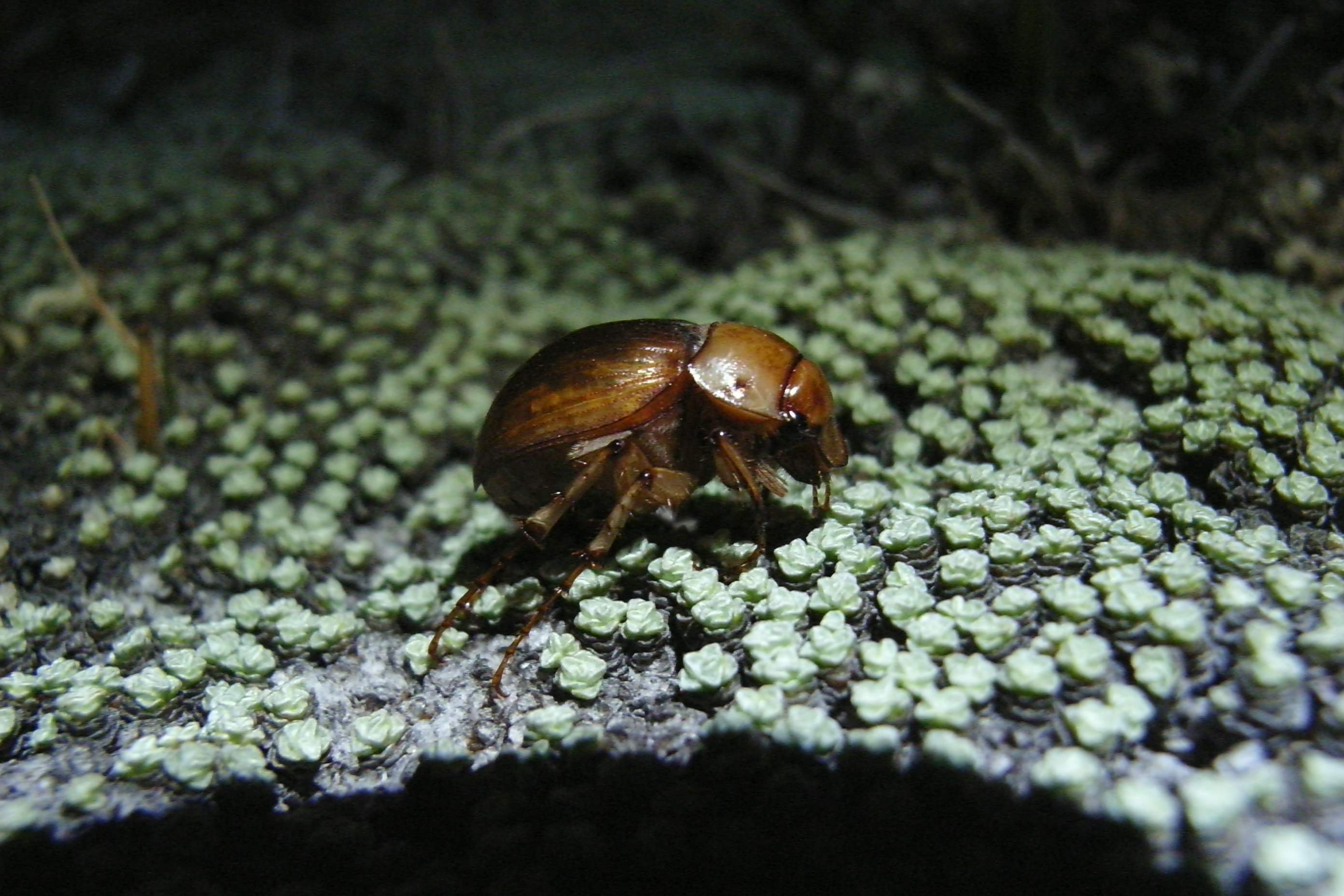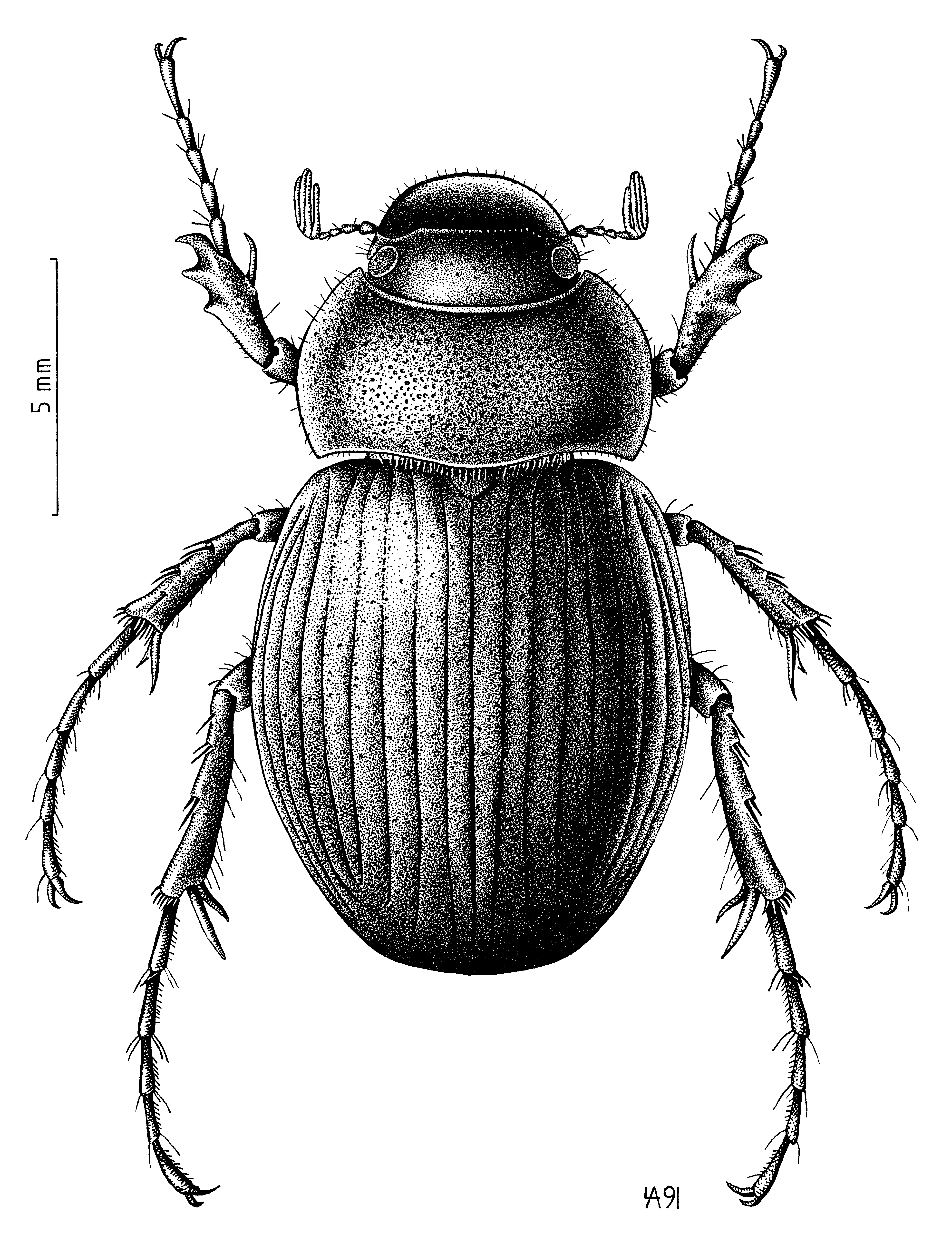Cromwell Chafer Beetle on:
[Wikipedia]
[Google]
[Amazon]
The Cromwell chafer beetle (''Prodontria lewisii'') is a species of flightless
 The habitat of this beetle is an area of low sand dunes on the Cromwell river terrace, known as the “Cromwell shallow sand”. The dunes are formed by
The habitat of this beetle is an area of low sand dunes on the Cromwell river terrace, known as the “Cromwell shallow sand”. The dunes are formed by
 The river terrace the beetle occupies is also the location of the town of
The river terrace the beetle occupies is also the location of the town of  The beetle is preyed on by introduced
The beetle is preyed on by introduced
17 June 2016
* Cromwell chafer and introduced redback spider discussed on RNZ ''Our Changing World''
17 February 2016
{{DEFAULTSORT:Cromwell chafer beetle Scarabaeidae Beetles of New Zealand Otago Beetles described in 1904 Endangered biota of New Zealand Endemic fauna of New Zealand Taxonomy articles created by Polbot Cromwell, New Zealand Taxobox binomials not recognized by IUCN Endemic insects of New Zealand
beetle
Beetles are insects that form the order Coleoptera (), in the superorder Endopterygota. Their front pair of wings are hardened into wing-cases, elytra, distinguishing them from most other insects. The Coleoptera, with about 400,000 describ ...
in the family Scarabaeidae
The family Scarabaeidae, as currently defined, consists of over 30,000 species of beetles worldwide; they are often called scarabs or scarab beetles. The classification of this family has undergone significant change in recent years. Several sub ...
. It is found in just one spot in Central Otago
Central Otago is located in the inland part of the Otago region in the South Island of New Zealand. The motto for the area is "A World of Difference".
The area is dominated by mountain ranges and the upper reaches of the Clutha River and tributa ...
, New Zealand, which is now a nature reserve.
Description and biology
This species was named by Broun in 1904 as ''Prodontria Lewisii'', from "three mutilated individuals found by Mr. J. H. Lewis on the sand-hills of the Molyneaux River." Although its species epithet was ''lewisii'', the modernisedgenitive
In grammar, the genitive case (abbreviated ) is the grammatical case that marks a word, usually a noun, as modifying another word, also usually a noun—thus indicating an attributive relationship of one noun to the other noun. A genitive can al ...
of Lewis, both ''lewisii'' and ''lewisi'' are used in the scientific literature; ''lewisii'' is slightly more common.
This large beetle has pale reddish-brown elytra
An elytron (; ; , ) is a modified, hardened forewing of beetles (Coleoptera), though a few of the true bugs (Hemiptera) such as the family Schizopteridae are extremely similar; in true bugs, the forewings are called hemelytra (sometimes alterna ...
which are strongly convex and with deep groves passing along their length. Females are longer and wider than males, but males have a longer hind foot and tibia
The tibia (; ), also known as the shinbone or shankbone, is the larger, stronger, and anterior (frontal) of the two bones in the leg below the knee in vertebrates (the other being the fibula, behind and to the outside of the tibia); it connects ...
.
The beetles live underground. They spend at least one year as larvae, living buried in the sand and feeding on plant roots. Adults emerge on humid nights on spring and summer for a few hours to feed on lichens and plants – mostly speedwell (''Veronica arvensis''), sheep's sorrel (''Rumex acetosella''), and cushion plant (''Raoulia australis'') – and to mate. Males emerge slightly earlier in the year than females, on average.
Habitat and distribution
 The habitat of this beetle is an area of low sand dunes on the Cromwell river terrace, known as the “Cromwell shallow sand”. The dunes are formed by
The habitat of this beetle is an area of low sand dunes on the Cromwell river terrace, known as the “Cromwell shallow sand”. The dunes are formed by loess
Loess (, ; from german: Löss ) is a clastic, predominantly silt-sized sediment that is formed by the accumulation of wind-blown dust. Ten percent of Earth's land area is covered by loess or similar deposits.
Loess is a periglacial or aeolian ...
originally deposited by the Clutha River
The Clutha River (, officially gazetted as Clutha River / ) is the second longest river in New Zealand and the longest in the South Island. It flows south-southeast through Central and South Otago from Lake Wānaka in the Southern Alps to the P ...
. As ''P. lewisii'' seems to be adapted to burrowing in these inland dunes, its entire natural range was probably never more than 500 hectares.
The species is currently restricted to an 81 hectare nature reserve, between Bannockburn
Bannockburn (Scottish Gaelic ''Allt a' Bhonnaich'') is an area immediately south of the centre of Stirling in Scotland. It is part of the City of Stirling. It is named after the Bannock Burn, a stream running through the town before flowing int ...
and Cromwell
Oliver Cromwell (25 April 15993 September 1658) was an English politician and military officer who is widely regarded as one of the most important statesmen in English history. He came to prominence during the 1639 to 1651 Wars of the Three Ki ...
. Regular surveys of the beetle suggest they are only using 12% of the habitat available in the reserve.
Conservation
 The river terrace the beetle occupies is also the location of the town of
The river terrace the beetle occupies is also the location of the town of Cromwell
Oliver Cromwell (25 April 15993 September 1658) was an English politician and military officer who is widely regarded as one of the most important statesmen in English history. He came to prominence during the 1639 to 1651 Wars of the Three Ki ...
. Some of the beetles were found north of the town in 1968, next to a nine-hole golf course, but that population was destroyed when the course was expanded to 18 holes. A block of undeveloped habitat surrounded by streets existed in the town of Cromwell itself by the 1970s; two residents used pitfall traps to catch and relocate the beetles from this block over 1975–76, before it was levelled for housing. Much of the rest of the beetle's original 500-hectare range was destroyed by the construction of the Clyde Dam
The Clyde Dam, New Zealand's third-largest hydroelectric dam, is built on the Clutha River / Mata-Au near the town of Clyde. It is owned and operated by Contact Energy.
History
There was considerable controversy when the dam was planned because i ...
in 1979 and the subsequent formation of Lake Dunstan
Lake Dunstan is a man-made lake and reservoir in the South Island of New Zealand.
The lake was formed on the Clutha River as a result of the construction of the Clyde Dam, filling in four controlled stages beginning in April 1992 and completed ...
.
The remaining surviving population of the Cromwell chafer was a 95 hectare triangular area of undeveloped land immediately south-west of Cromwell. In 1979, an 81 ha area was fenced off to protect the population, and in 1983 it was gazetted as the Cromwell Chafer Beetle Nature Reserve: at the time, the only reserve in the world created solely for an invertebrate.
In 1996, after years of being classed as Vulnerable, the Cromwell chafer was declared Critically Endangered on the IUCN Red List
The International Union for Conservation of Nature (IUCN) Red List of Threatened Species, also known as the IUCN Red List or Red Data Book, founded in 1964, is the world's most comprehensive inventory of the global conservation status of biol ...
. It currently has the Department of Conservation status Nationally Endangered. The main threats to the Cromwell chafer were formerly habitat destruction
Habitat destruction (also termed habitat loss and habitat reduction) is the process by which a natural habitat becomes incapable of supporting its native species. The organisms that previously inhabited the site are displaced or dead, thereby ...
, but now are introduced predators.
 The beetle is preyed on by introduced
The beetle is preyed on by introduced hedgehog
A hedgehog is a spiny mammal of the subfamily Erinaceinae, in the eulipotyphlan family Erinaceidae. There are seventeen species of hedgehog in five genera found throughout parts of Europe, Asia, and Africa, and in New Zealand by introducti ...
s, little owl
The little owl (''Athene noctua''), also known as the owl of Athena or owl of Minerva, is a bird that inhabits much of the temperate and warmer parts of Europe, the Palearctic east to Korea, and North Africa. It was introduced into Britain at ...
s, and possibly European earwigs. Recently, the species of most concern has been the introduced Australian redback spider
The redback spider (''Latrodectus hasselti''), also known as the Australian black widow, is a species of highly venomous spider believed to originate in South Australia or adjacent Western Australian deserts, but now found throughout Australi ...
, which became established in Central Otago in the 1980s. Redback spiders shelter in rabbit holes in the reserve, and may kill hundreds of chafer beetles a year. The Department of Conservation
An environmental ministry is a national or subnational government agency politically responsible for the environment and/or natural resources. Various other names are commonly used to identify such agencies, such as Ministry of the Environment ...
are controlling rabbits and destroying rabbit burrows in the reserve.
There is an annual survey of Cromwell chafer numbers – on "Cromwell chafer beetle day" – by DOC
DOC, Doc, doc or DoC may refer to:
In film and television
* ''Doc'' (2001 TV series), a 2001–2004 PAX series
* ''Doc'' (1975 TV series), a 1975–1976 CBS sitcom
* "D.O.C." (''Lost''), a television episode
* ''Doc'' (film), a 1971 Wester ...
and Agresearch
AgResearch Ltd (formerly known as New Zealand Pastoral Agriculture Research Institute Limited) is one of New Zealand's largest Crown Research Institutes with over 700 staff and revenue of NZ$160.7 million in the year to June 2014.
Main areas ...
, conducted by taking 670 core samples of sand in the reserve and checking them for beetle larvae. Numbers found are usually very low, just a few individuals per survey. The current population of Cromwell chafers is estimated to be approximately 3000 individuals.
See also
*Conservation in New Zealand
Conservation in New Zealand has a history associated with both Māori and Europeans. Both groups of people caused a loss of species and both altered their behaviour to a degree after realising their effect on indigenous flora and fauna.
Protected ...
*Hedgehogs in New Zealand
The European hedgehog (''Erinaceus europaeus'') was brought to New Zealand by British colonists in the 1870s to remind them of their homeland. They have spread throughout the country, being absent only in inhospitable environments. The general p ...
References
External links
* Cromwell chafer on RNZ ''Critter of the Week''17 June 2016
* Cromwell chafer and introduced redback spider discussed on RNZ ''Our Changing World''
17 February 2016
{{DEFAULTSORT:Cromwell chafer beetle Scarabaeidae Beetles of New Zealand Otago Beetles described in 1904 Endangered biota of New Zealand Endemic fauna of New Zealand Taxonomy articles created by Polbot Cromwell, New Zealand Taxobox binomials not recognized by IUCN Endemic insects of New Zealand